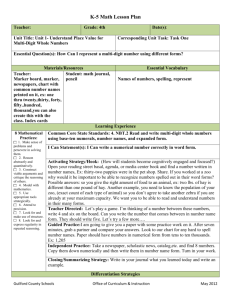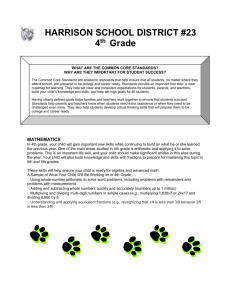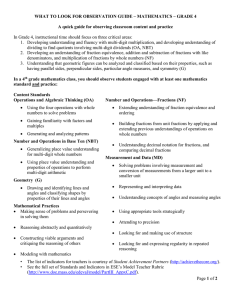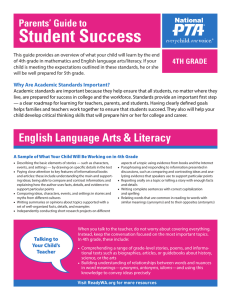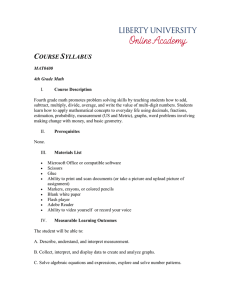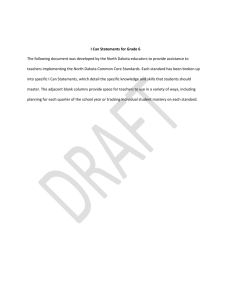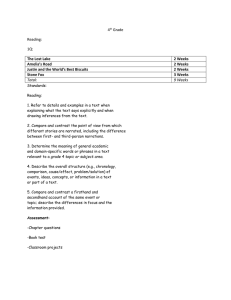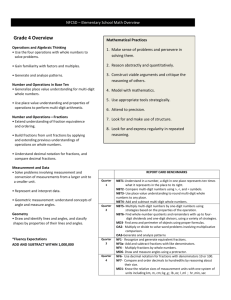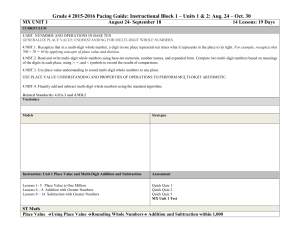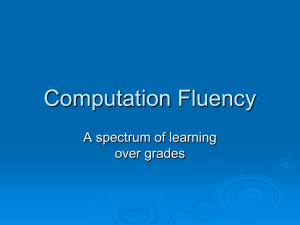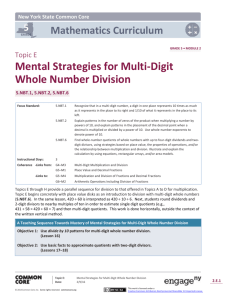2nd Nine weeks Standards- 4th Grade
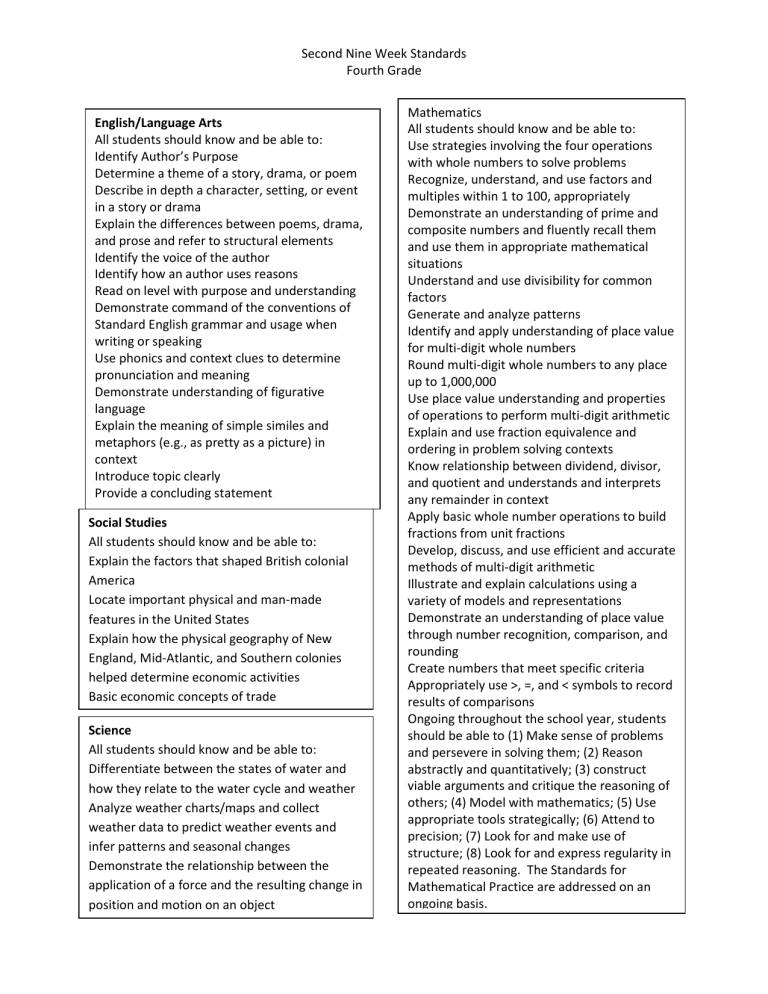
English/Language Arts
All students should know and be able to:
Identify Author’s Purpose
Determine a theme of a story, drama, or poem
Describe in depth a character, setting, or event in a story or drama
Explain the differences between poems, drama, and prose and refer to structural elements
Identify the voice of the author
Identify how an author uses reasons
Read on level with purpose and understanding
Demonstrate command of the conventions of
Standard English grammar and usage when writing or speaking
Use phonics and context clues to determine pronunciation and meaning
Demonstrate understanding of figurative language
Explain the meaning of simple similes and metaphors (e.g., as pretty as a picture) in context
Introduce topic clearly
Provide a concluding statement
Social Studies
All students should know and be able to:
Explain the factors that shaped British colonial
America
Locate important physical and man-made features in the United States
Explain how the physical geography of New
England, Mid-Atlantic, and Southern colonies helped determine economic activities
Basic economic concepts of trade
Science
All students should know and be able to:
Differentiate between the states of water and how they relate to the water cycle and weather
Analyze weather charts/maps and collect weather data to predict weather events and infer patterns and seasonal changes
Demonstrate the relationship between the application of a force and the resulting change in position and motion on an object
Second Nine Week Standards
Fourth Grade
Mathematics
All students should know and be able to:
Use strategies involving the four operations with whole numbers to solve problems
Recognize, understand, and use factors and multiples within 1 to 100, appropriately
Demonstrate an understanding of prime and composite numbers and fluently recall them and use them in appropriate mathematical situations
Understand and use divisibility for common factors
Generate and analyze patterns
Identify and apply understanding of place value for multi-digit whole numbers
Round multi-digit whole numbers to any place up to 1,000,000
Use place value understanding and properties of operations to perform multi-digit arithmetic
Explain and use fraction equivalence and ordering in problem solving contexts
Know relationship between dividend, divisor, and quotient and understands and interprets any remainder in context
Apply basic whole number operations to build fractions from unit fractions
Develop, discuss, and use efficient and accurate methods of multi-digit arithmetic
Illustrate and explain calculations using a variety of models and representations
Demonstrate an understanding of place value through number recognition, comparison, and rounding
Create numbers that meet specific criteria
Appropriately use >, =, and < symbols to record results of comparisons
Ongoing throughout the school year, students should be able to (1) Make sense of problems and persevere in solving them; (2) Reason abstractly and quantitatively; (3) construct viable arguments and critique the reasoning of others; (4) Model with mathematics; (5) Use appropriate tools strategically; (6) Attend to precision; (7) Look for and make use of structure; (8) Look for and express regularity in repeated reasoning. The Standards for
Mathematical Practice are addressed on an ongoing basis.
